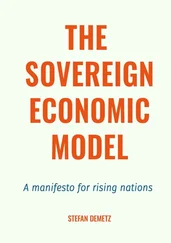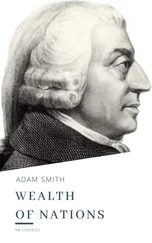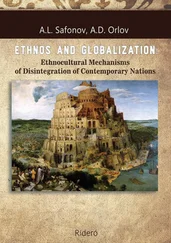It was now illegal to wear Asian silks and calicoes in England. But it was still possible to import them for reexport to Europe or elsewhere, in particular to the American colonies. Moreover, plain calicoes could be imported and finished in England, and muslins were exempt from the ban. After a long struggle, these loopholes, as the domestic woolen textile manufacturers viewed them, were closed by the Calicoe Act of 1721: “After December 25, 1722, it shall not be lawful for any person or persons whatsoever to use or wear in Great Britain, in any garment or apparel whatsoever, any printed, painted, stained or dyed Calicoe.” Though this act removed competition from Asia for English woolens, it still left an active domestic cotton and linen industry competing against the woolens: cotton and linen were mixed to produce a popular cloth called fustian. Having excluded Asian competition, the wool industry now turned to clamp down on linen. Linen was primarily made in Scotland and Ireland, which gave some scope to an English coalition to demand those countries’ exclusion from English markets. However, there were limits to the power of the woolen manufacturers. Their new attempts encountered strong opposition from fustian producers in the burgeoning industrial centers of Manchester, Lancaster, and Liverpool. The pluralistic political institutions implied that all these different groups now had access to the policy process in Parliament via voting and, more important, petitioning. Though the petitions flew from the pens of both sides, amassing signatures for and against, the outcome of this conflict was a victory for the new interests against those of the wool industry. The Manchester Act of 1736 agreed that “great quantities of stuffs made from linen yarn and cotton wool have for several years past been manufactured, and have been printed and painted within this kingdom of Great Britain.” It then went on to assert that “nothing in the said recited Act [of 1721] shall extend or be construed to prohibit the wearing or using in apparel, household stuff, furniture or otherwise, any sort of stuff made out of linen yarn and cotton wool, manufactured and printed or painted with any colour or colours within the kingdom of Great Britain.”
The Manchester Act was a significant victory for the nascent cotton manufacturers. But its historical and economic significance was in fact much greater. First, it demonstrated the limits of entry barriers that the pluralistic political institutions of parliamentary England would permit. Second, over the next half century, technological innovations in the manufacture of cotton cloth would play a central role in the Industrial Revolution and fundamentally transform society by introducing the factory system.
After 1688, though domestically a level playing field emerged, internationally Parliament strove to tilt it. This was evident not only from the Calicoe Acts but also from the Navigation Acts, the first of which was passed in 1651, and they remained in force with alternations for the next two hundred years. The aim of these acts was to facilitate England’s monopolization of international trade—though crucially this was monopolization not by the state but by the private sector. The basic principle was that English trade should be carried in English ships. The acts made it illegal for foreign ships to transport goods from outside Europe to England or its colonies, and it was similarly illegal for third-party countries’ ships to ship goods from a country elsewhere in Europe to England. This advantage for English traders and manufacturers naturally increased their profits and may have further encouraged innovation in these new and highly profitable activities.
By 1760 the combination of all these factors—improved and new property rights, improved infrastructure, a changed fiscal regime, greater access to finance, and aggressive protection of traders and manufacturers—was beginning to have an effect. After this date, there was a jump in the number of patented inventions, and the great flowering of technological change that was to be at the heart of the Industrial Revolution began to be evident. Innovations took place on many fronts, reflecting the improved institutional environment. One crucial area was power, most famously the transformations in the use of the steam engine that were a result of James Watt’s ideas in the 1760s.
Watt’s initial breakthrough was to introduce a separate condensing chamber for the steam so that the cylinder that housed the piston could be kept continually hot, instead of having to be warmed up and cooled down. He subsequently developed many other ideas, including much more efficient methods of converting the motion of the steam engine into useful power, notably his “sun and planets” gear system. In all these areas technological innovations built on earlier work by others. In the context of the steam engine, this included early work by English inventor Thomas Newcomen and also by Dionysius Papin, a French physicist and inventor.
The story of Papin’s invention is another example of how, under extractive institutions, the threat of creative destruction impeded technological change. Papin developed a design for a “steam digester” in 1679, and in 1690 he extended this into a piston engine. In 1705 he used this rudimentary engine to build the world’s first steamboat. Papin was by this time a professor of mathematics at the University of Marburg, in the German state of Kassel. He decided to steam the boat down the river Fulda to the river Weser. Any boat making this trip was forced to stop at the city of Münden. At that time, river traffic on the Fulda and Weser was the monopoly of a guild of boatmen. Papin must have sensed that there might be trouble. His friend and mentor, the famous German physicist Gottfried Leibniz, wrote to the Elector of Kassel, the head of state, petitioning that Papin should be allowed to “… pass unmolested …” through Kassel. Yet Leibniz’s petition was rebuffed and he received the curt answer that “the Electoral Councillors have found serious obstacles in the way of granting the above petition, and, without giving their reasons, have directed me to inform you of their decision, and that in consequence the request is not granted by his Electoral Highness.” Undeterred, Papin decided to make the journey anyway. When his steamer arrived at Münden, the boatmen’s guild first tried to get a local judge to impound the ship, but was unsuccessful. The boatmen then set upon Papin’s boat and smashed it and the steam engine to pieces. Papin died a pauper and was buried in an unmarked grave. In Tudor or Stuart England, Papin might have received similar hostile treatment, but this all changed after 1688. Indeed, Papin was intending to sail his boat to London before it was destroyed.
In metallurgy, key contributions were made in the 1780s by Henry Cort, who introduced new techniques for dealing with impurities in iron, allowing for a much better quality wrought iron to be produced. This was critical for the manufacture of machine parts, nails, and tools. The production of vast quantities of wrought iron using Cort’s techniques was facilitated by the innovations of Abraham Darby and his sons, who pioneered the use of coal to smelt iron beginning in 1709. This process was enhanced in 1762 by the adaptation, by John Smeaton, of water power to operate blowing cylinders in making coke. After this, charcoal vanished from the production of iron, to be replaced by coal, which was much cheaper and more readily available.
Even though innovation is obviously cumulative, there was a distinct acceleration in the middle of the eighteenth century. In no place was this more visible than in textile production. The most basic operation in the production of textiles is spinning, which involves taking plant or animal fibers, such as cotton or wool, and twisting them together to form yarn. This yarn is then woven to make up textiles. One of the great technological innovations of the medieval period was the spinning wheel, which replaced hand spinning. This invention appeared around 1280 in Europe, probably disseminating from the Middle East. The methods of spinning did not change until the eighteenth century. Significant innovations began in 1738, when Lewis Paul patented a new method of spinning using rollers to replace human hands to draw out the fibers being spun. The machine did not work well, however, and it was the innovations of Richard Arkwright and James Hargreaves that truly revolutionized spinning.
Читать дальше












